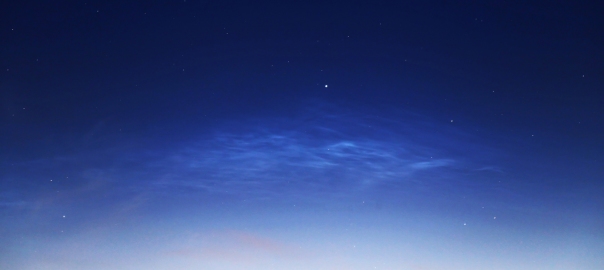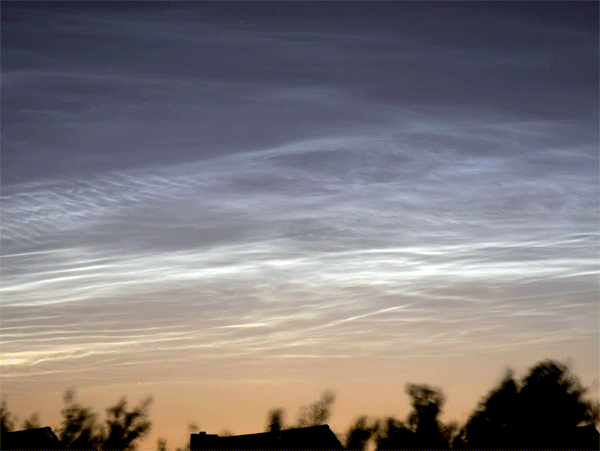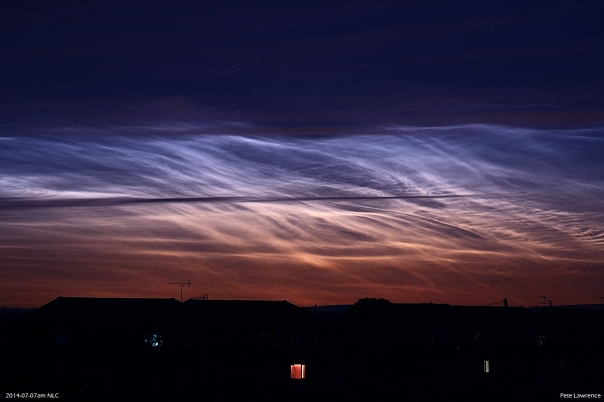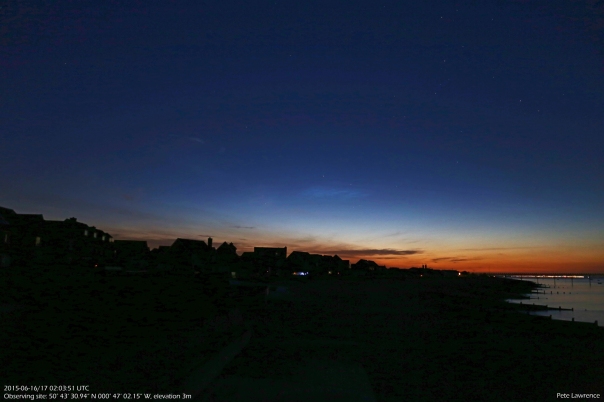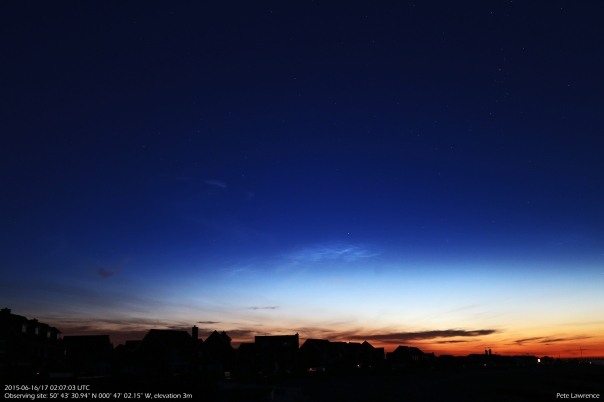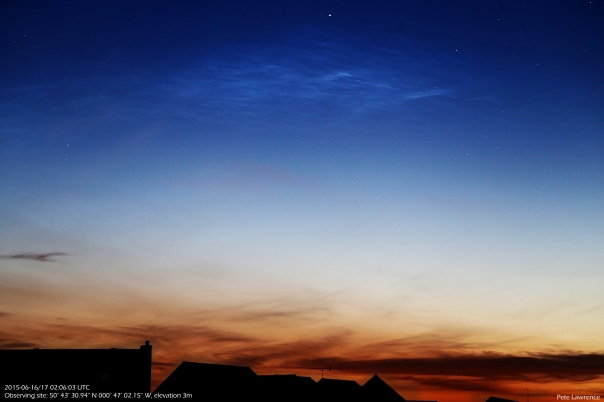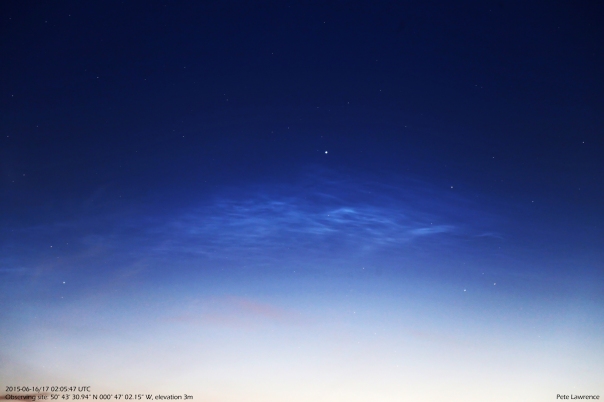The night sky in June and July is a somewhat troublesome affair because there’s not much of it. For an astronomer in the UK, it’s a difficult time of the year because the background sky never gets truly dark. The standard used to indicate when things have got dark enough to do proper night time astronomy is astronomical twilight. The period between astronomical twilight ending and beginning is that time when the sky is truly dark because the Sun’s altitude below the horizon is equal to or greater than 18 degrees. During the UK’s summer, this never happens, so the sky never gets properly dark.
All is not lost though because there are still lots of interesting things to look out for. One of these is a phenomenon that bridges the gap between astronomy and meteorology – Noctilucent Clouds.
Noctilucent Clouds, or NLC’s, are formed in a thin layer at an altitude of 76-85km altitude. This is located within the atmospheric layer known as the mesosphere. Getting particles up into this layer around which water ice crystals can form was always something of a mystery. However, recent research has shown that the tiny specks left behind after a sand grain sized particle vapourises in the atmosphere to create a meteor, are a prime source for NLC seeding.
Getting water vapour up that high is also a problem and the complex chemistry involved has potential uses as an indicator for climate change. The beautiful NLC displays which result may turn out to be a double-edged sword!
NLC displays used to be considered quite a rare phenomenon, typically occurring in the period between late May and early August. This is when the temperature of the mesosphere in the Northern Hemisphere drops low enough for NLC’s to form. It’s also when the altitude of the Sun can drop to within 6-16 degrees below the horizon. This allows the sky to get reasonably dark but also is able to illuminate the high altitude NLC cloud layer. So although we are in darkness, the NLC’s shine with reflected light from the below the horizon Sun.
Consequently, NLC’s appear to hug the twilight arc, and shine against the darker sky of night; hence the name – noctilucent which roughly means ‘night shining’.
A display, if present, will typically be visible 90-120 minutes after sunset low in the northwest or a similar time before sunrise low in the northeastern part of the sky. A bright display may be seen starting in low in the northwest but appearing to move through north and into the northeastern position as the reflected light follows the position of the Sun below the horizon.
From my location in Selsey, NLC’s can be tricky things to see. During the Northern Hemisphere’s summer months, they are typically seen from latitudes between 50° and 70° north. My latitude is 50.75° north, which puts me close to the edge of visibility.
A clear(ish) night on 16/17 June 2015 meant I was still up at the appropriate time to spot NLC’s low in the northeast before the dawn kicked in. Actually, I had seen that there was a display happening that night from the excellent IAP camera network. Unfortunately, a thin band of cloud had passed through in the early part of the night and this rendered the northern part of the sky out of action, so I concentrated on some other projects I’ve got going.
I headed down to Selsey Beach at around 03:00 BST (02:00 UT) and immediately spied a small, faint (type 1) patch of NLC under the bright star Capella in Auriga.
There were some other bright clouds passing through the region too, but these were most probably high altitude aircraft vapour trails, posing as fake NLC’s! As the twilight arc grew, so did the brightness of the patch (type 2).
A magnified image of the patch showed the characteristic network structure of NLC’s, giving me my first display of the 2015 season.
The patch had faded to nothing by 02:15 UT. Hints of a lower and brighter display were seen, but from my latitude these were lost to the horizon and low cloud that persisted there.
Fingers crossed that the 2015 display begins to build.
I mentioned NLC’s, as well as two comets which may be visible in the coming weeks, in my Star Guide in the June 2015, BBC Sky at Night broadcast. Click here watch this clip.
